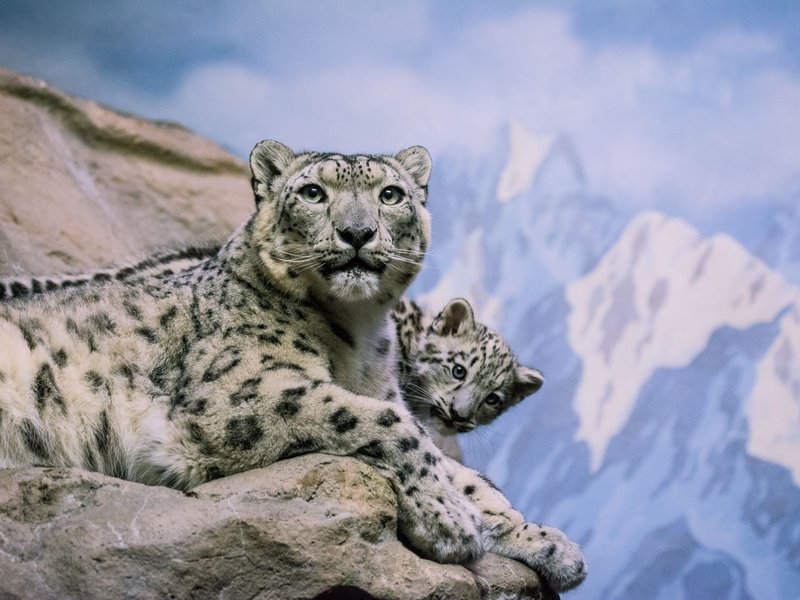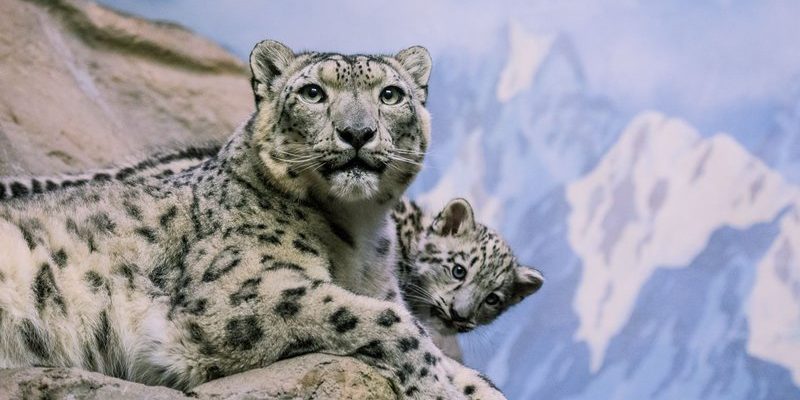
Understanding the habitat and distribution of snow leopards helps us appreciate their role in the ecosystem and the challenges they face. Their range is not just about the physical space they occupy; it involves unique environmental factors that support their survival. Let’s dive into the specifics of where snow leopards live and what makes their habitat so special.
Snow Leopard Habitat: The High Mountains
Snow leopards primarily live in the mountain ranges of Central and South Asia. Think of towering peaks, steep cliffs, and rocky outcrops — places that feel almost otherworldly. Their preferred habitat stretches across various countries, including China, India, Nepal, Bhutan, Pakistan, and Mongolia. They are often found at elevations between 9,800 to 16,500 feet, but they can wander higher or lower depending on food availability and environmental conditions.
These cats are well adapted to their mountainous surroundings. Their thick fur keeps them warm in freezing temperatures, and their wide, furry feet act like natural snowshoes, helping them maneuver on the snow. Snow leopards are also incredibly stealthy and can blend into their rocky environment thanks to their unique coat patterns. It’s like nature’s way of giving them a camouflage suit!
Key Regions of Snow Leopard Distribution
Snow leopards roam across a vast but fragmented range. Let’s take a closer look at some of the key regions where they can be found:
- The Himalayas: This is perhaps the most iconic region for snow leopards. The Himalayan mountains provide a perfect blend of altitude, rocky terrain, and prey availability, making it a prime habitat.
- The Pamirs: Known as the “Roof of the World,” this mountainous region in Tajikistan is home to a significant population of snow leopards. Here, they hunt for ibex and other mountain-dwelling animals.
- The Tibetan Plateau: Often called the “Third Pole,” this arid region is important for conserving biodiversity, including the snow leopard. The harsh conditions here shape the lifestyle of both the animals and the people living in the area.
- The Altai Mountains: Spanning parts of Mongolia, Russia, China, and Kazakhstan, these mountains support a healthy snow leopard population. The diverse ecosystem here is rich in different species of prey.
Each of these regions presents its unique challenges and opportunities, making the snow leopard’s adaptability vital for its survival.
Climate and Environmental Factors
Snow leopards thrive in harsh climates, which means their habitats are usually cold and dry. The temperature in these mountainous areas can drop significantly, sometimes reaching as low as -40°F in winter. It’s like living in a giant freezer! But snow leopards are well-equipped for this environment.
The elevation plays a crucial role in their lifestyle. At high altitudes, the weather is unpredictable, with sudden snowstorms common. This tough environment requires snow leopards to be both solitary and agile, relying on their keen senses to detect prey even in challenging conditions. They mainly hunt in the early morning or late afternoon when it’s cooler, making use of their excellent eyesight and hearing.
Prey Availability and Its Importance
One of the biggest factors impacting where snow leopards live is their prey. These beautiful cats primarily hunt mountain goats, sheep, and other herbivores. Their diet can include animals like ibex, bharal, or blue sheep, and even smaller mammals depending on what’s available.
So, why does prey availability matter? Well, if their food sources dwindle due to poaching or habitat destruction, snow leopards might be forced to change their territory or face starvation. This not only affects their population but also the overall health of the ecosystem they inhabit. Each snow leopard plays a crucial role in controlling the herbivore population, ensuring balance in their environment.
Threats to Their Habitat
Despite their incredible adaptations, snow leopards face several threats to their habitats. Climate change is a significant concern; as temperatures rise and weather patterns shift, the fragile ecosystems they depend on can be disrupted. Imagine trying to find your favorite coffee shop in a city that keeps changing its layout — pretty frustrating, right?
Additionally, human activities such as mining, development, and poaching pose significant risks. As more people encroach on their territory, the chances of conflict rise. Livestock grazing can lead to competition for space and food, pushing snow leopards into less suitable habitats. Conservation efforts are critical to address these threats, aiming to protect both the snow leopards and the ecosystems they inhabit.
Conservation Efforts and Future Outlook
Conservation initiatives are underway to help protect snow leopards and their habitats. Organizations are working to create protected areas and promote sustainable practices among local communities. Efforts often include community engagement to find solutions that benefit both humans and wildlife.
For instance, introducing compensation programs for farmers who lose livestock to snow leopards can help reduce negative perceptions of these magnificent creatures. With awareness and education, locals can understand the importance of snow leopards in maintaining the health of their environment, much like how every piece in a puzzle is essential for completing the picture.
The future of snow leopards largely depends on these collaborative conservation strategies. While challenges remain, the dedication of conservationists, researchers, and local communities provides hope for the survival of these stunning animals in the wild.
Snow leopards represent the wild heart of the mountains they inhabit. Their unique habitats are as much a part of their identity as their physical characteristics. Protecting these majestic cats means preserving the rugged terrains and ecosystems they rely on for survival.
Through awareness, conservation efforts, and a commitment to coexistence, we can ensure that snow leopards continue to roam the rugged heights of Central Asia for generations to come. After all, every mountain needs its guardian, and the snow leopard is surely one of nature’s finest.

